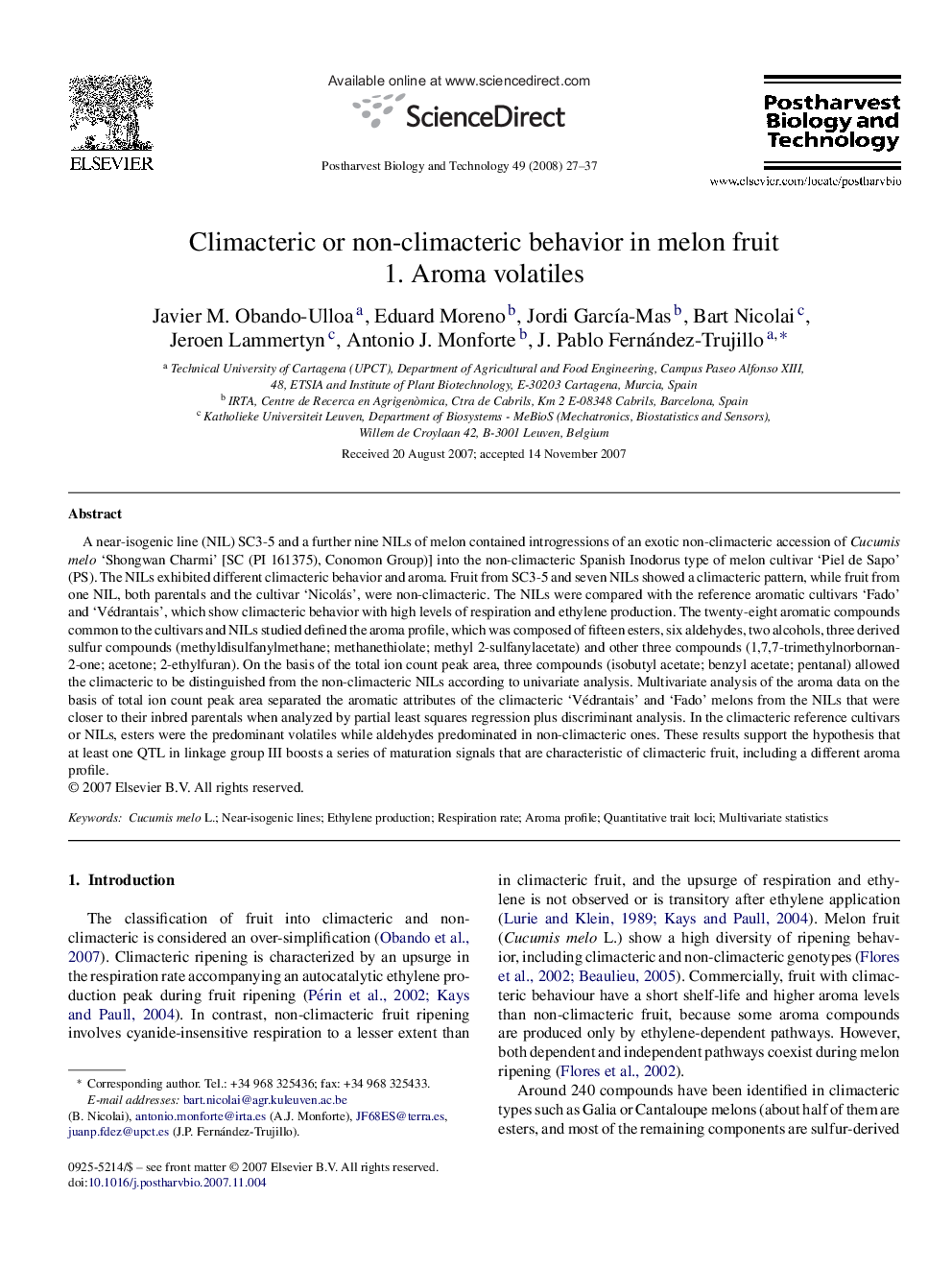| کد مقاله | کد نشریه | سال انتشار | مقاله انگلیسی | نسخه تمام متن |
|---|---|---|---|---|
| 4519435 | 1322836 | 2008 | 11 صفحه PDF | دانلود رایگان |

A near-isogenic line (NIL) SC3-5 and a further nine NILs of melon contained introgressions of an exotic non-climacteric accession of Cucumis melo ‘Shongwan Charmi’ [SC (PI 161375), Conomon Group)] into the non-climacteric Spanish Inodorus type of melon cultivar ‘Piel de Sapo’ (PS). The NILs exhibited different climacteric behavior and aroma. Fruit from SC3-5 and seven NILs showed a climacteric pattern, while fruit from one NIL, both parentals and the cultivar ‘Nicolás’, were non-climacteric. The NILs were compared with the reference aromatic cultivars ‘Fado’ and ‘Védrantais’, which show climacteric behavior with high levels of respiration and ethylene production. The twenty-eight aromatic compounds common to the cultivars and NILs studied defined the aroma profile, which was composed of fifteen esters, six aldehydes, two alcohols, three derived sulfur compounds (methyldisulfanylmethane; methanethiolate; methyl 2-sulfanylacetate) and other three compounds (1,7,7-trimethylnorbornan-2-one; acetone; 2-ethylfuran). On the basis of the total ion count peak area, three compounds (isobutyl acetate; benzyl acetate; pentanal) allowed the climacteric to be distinguished from the non-climacteric NILs according to univariate analysis. Multivariate analysis of the aroma data on the basis of total ion count peak area separated the aromatic attributes of the climacteric ‘Védrantais’ and ‘Fado’ melons from the NILs that were closer to their inbred parentals when analyzed by partial least squares regression plus discriminant analysis. In the climacteric reference cultivars or NILs, esters were the predominant volatiles while aldehydes predominated in non-climacteric ones. These results support the hypothesis that at least one QTL in linkage group III boosts a series of maturation signals that are characteristic of climacteric fruit, including a different aroma profile.
Journal: Postharvest Biology and Technology - Volume 49, Issue 1, July 2008, Pages 27–37